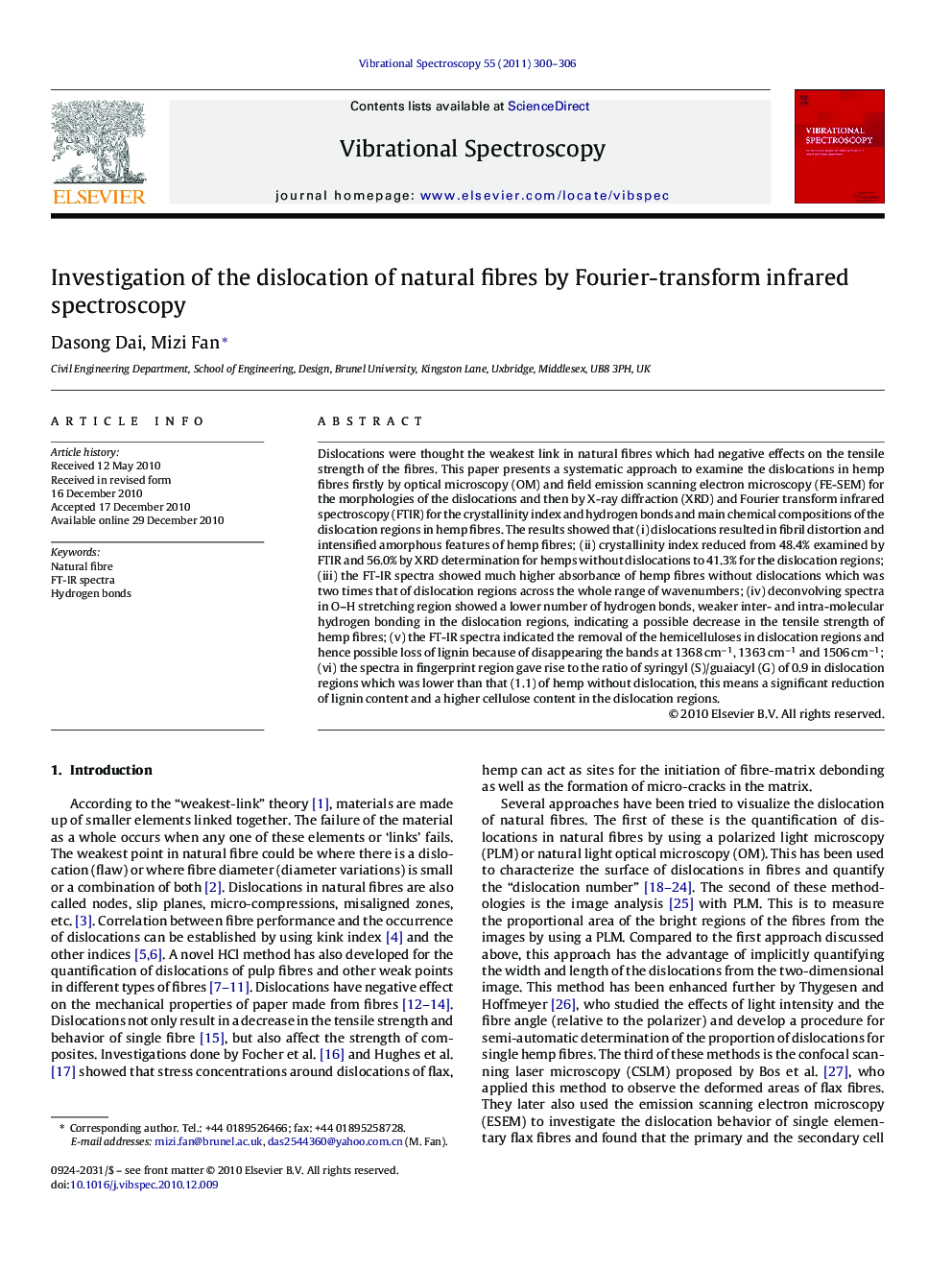| Article ID | Journal | Published Year | Pages | File Type |
|---|---|---|---|---|
| 10564658 | Vibrational Spectroscopy | 2011 | 7 Pages |
Abstract
Dislocations were thought the weakest link in natural fibres which had negative effects on the tensile strength of the fibres. This paper presents a systematic approach to examine the dislocations in hemp fibres firstly by optical microscopy (OM) and field emission scanning electron microscopy (FE-SEM) for the morphologies of the dislocations and then by X-ray diffraction (XRD) and Fourier transform infrared spectroscopy (FTIR) for the crystallinity index and hydrogen bonds and main chemical compositions of the dislocation regions in hemp fibres. The results showed that (i) dislocations resulted in fibril distortion and intensified amorphous features of hemp fibres; (ii) crystallinity index reduced from 48.4% examined by FTIR and 56.0% by XRD determination for hemps without dislocations to 41.3% for the dislocation regions; (iii) the FT-IR spectra showed much higher absorbance of hemp fibres without dislocations which was two times that of dislocation regions across the whole range of wavenumbers; (iv) deconvolving spectra in O-H stretching region showed a lower number of hydrogen bonds, weaker inter- and intra-molecular hydrogen bonding in the dislocation regions, indicating a possible decrease in the tensile strength of hemp fibres; (v) the FT-IR spectra indicated the removal of the hemicelluloses in dislocation regions and hence possible loss of lignin because of disappearing the bands at 1368Â cmâ1, 1363Â cmâ1 and 1506Â cmâ1; (vi) the spectra in fingerprint region gave rise to the ratio of syringyl (S)/guaiacyl (G) of 0.9 in dislocation regions which was lower than that (1.1) of hemp without dislocation, this means a significant reduction of lignin content and a higher cellulose content in the dislocation regions.
Related Topics
Physical Sciences and Engineering
Chemistry
Analytical Chemistry
Authors
Dasong Dai, Mizi Fan,
